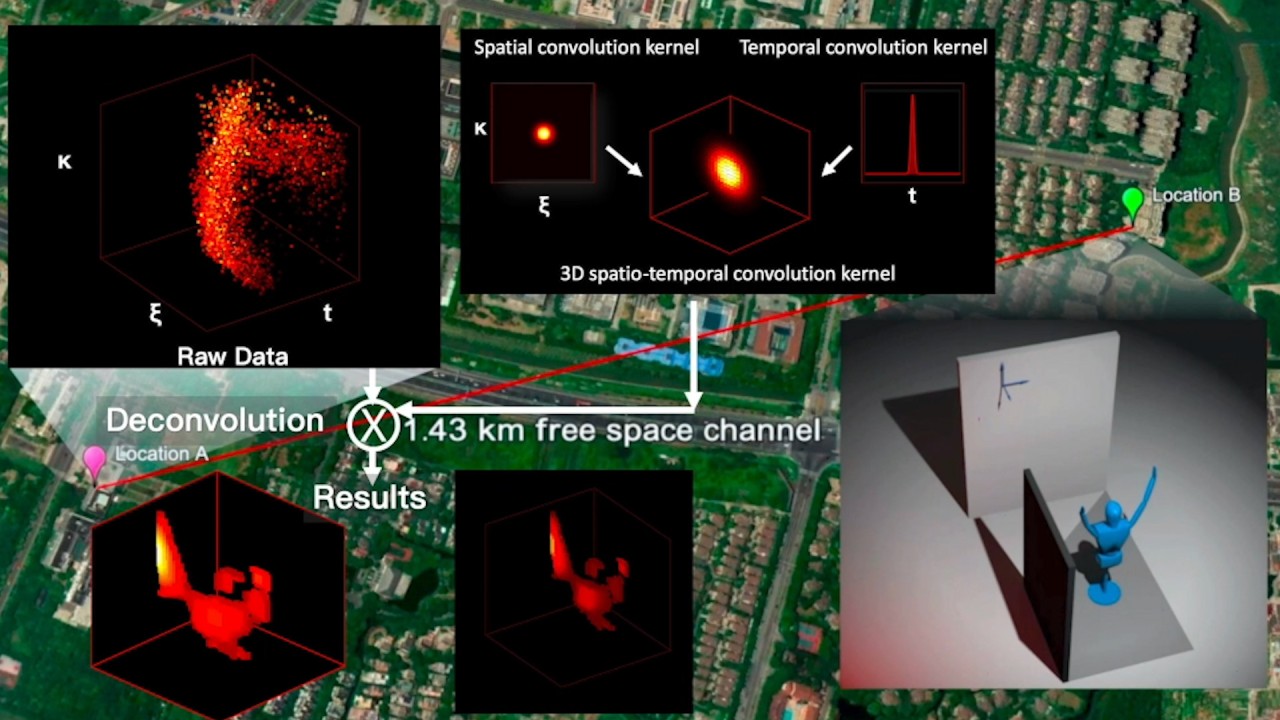
Chinese scientists develop laser that can spot hidden object from more than a kilometre away
- Previously it was only possible to find things a few metres away by using non-line-of-sight imaging but the range has now greatly expanded
- The technology could be used to help self-driving cars spot other vehicles and pedestrians or help law enforcement
Chinese scientists have developed a way to see an object hidden behind a screen more than a kilometre away.
They said the technique, known as non-line-of-sight (NLOS) imaging, could be used for everything from defence and policing to transport.
The team of scientists at the University of Science and Technology of China set up a laser emitter at their university campus in urban Shanghai and hid a mannequin behind a screen inside a flat 1.43km (0.89 miles) away, according to a paper published earlier this month in the Proceedings of the National Academy of Sciences.
The researchers projected a pulsed laser onto a wall inside the flat, which then scattered in multiple directions. Some of the light particles, or photons, were reflected on to the hidden mannequin and some others travelled to a sensor located next to the laser emitter.
The photons that hit the mannequin were then reflected back onto the wall and bounced back a third time to hit the sensor.

02:28
Chinese scientists use lasers to ‘see’ around corners over 1km away
By analysing the travel duration of light that bounced against the wall once –compared with light that bounced between the wall, the mannequin and the sensor – the researchers were able to calculate how far the each part of the mannequin was positioned from the wall and reconstruct a fuzzy, three-dimensional image via an algorithm.
Deriving the position of the hidden object from a photon’s travel time is possible because the speed of light is constant.
The set-up could also distinguish different objects placed 9.4cm (3.7 inches) apart.
Previously it was only possible to detect partially or fully hidden objects from a few metres away, because light travelling longer distances is more likely to be affected by stray light from the environment and particles in the air, which confuses the sensors.
“This range is about three orders of magnitude longer than previous experiments,” the researchers wrote in the article. “The results will open avenues for the development of NLOS imaging techniques and relevant applications to real-world conditions.”
Playing laser tag: US dominance and Chinese ambition point to new arms race
To overcome problems caused by distance, the scientists designed the laser emitter and the sensor to use different telescopes to limit signal interference between them.
The sensor was also specially designed with multiple lenses to prevent stray light from the surroundings from being mixed in with the laser light particles returning from the flat where the mannequin was placed.
The imaging algorithm used was also tailored for long-range outdoor conditions. It reconstructed the shape of the mannequin by recording the travel time of photons between the wall and the detector as well as how the laser was scattered on the wall after bouncing off the mannequin.
The apparatus could also detect the position of moving hidden objects in real time with two additional sensors that receive photons reflecting off different areas of the wall, the research paper said.
Chinese scientists develop laser that could track submarines
Wu Cheng, one of the authors of the article, told the South China Morning Post, that NLOS imaging could help self-driving cars detect other vehicles and pedestrians behind buildings.
“For example, the ground or walls of a building can be used to reflect light, even when the surface is uneven,” he said. But he said future research needed to take into account how the speed of the car would affect the process.
Wu also said NLOS imaging could also be used in policing, such as locating a hostage in an area with a lot of rooms and corners.

